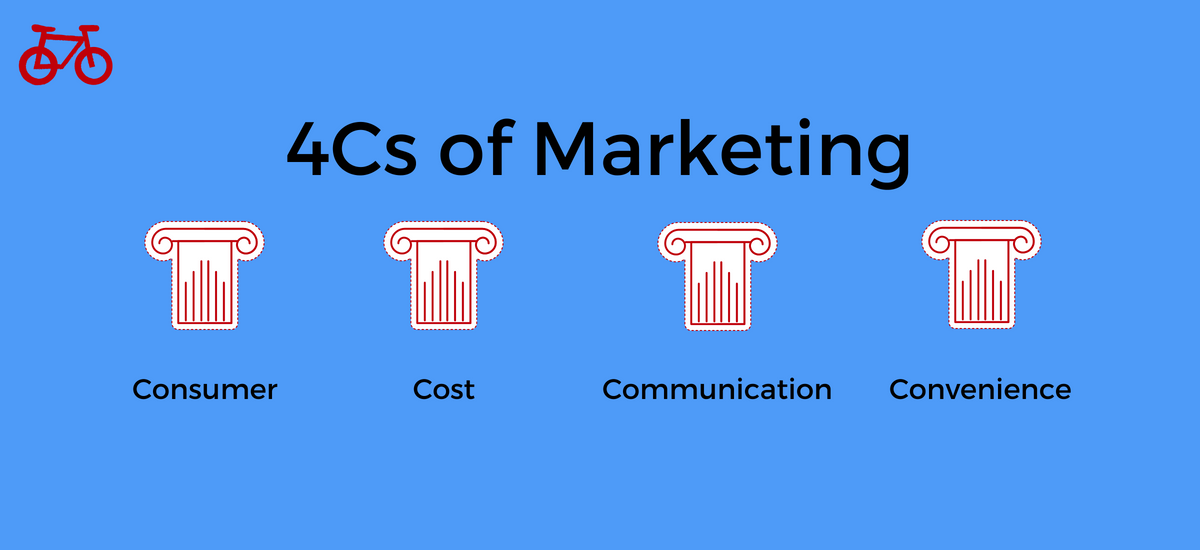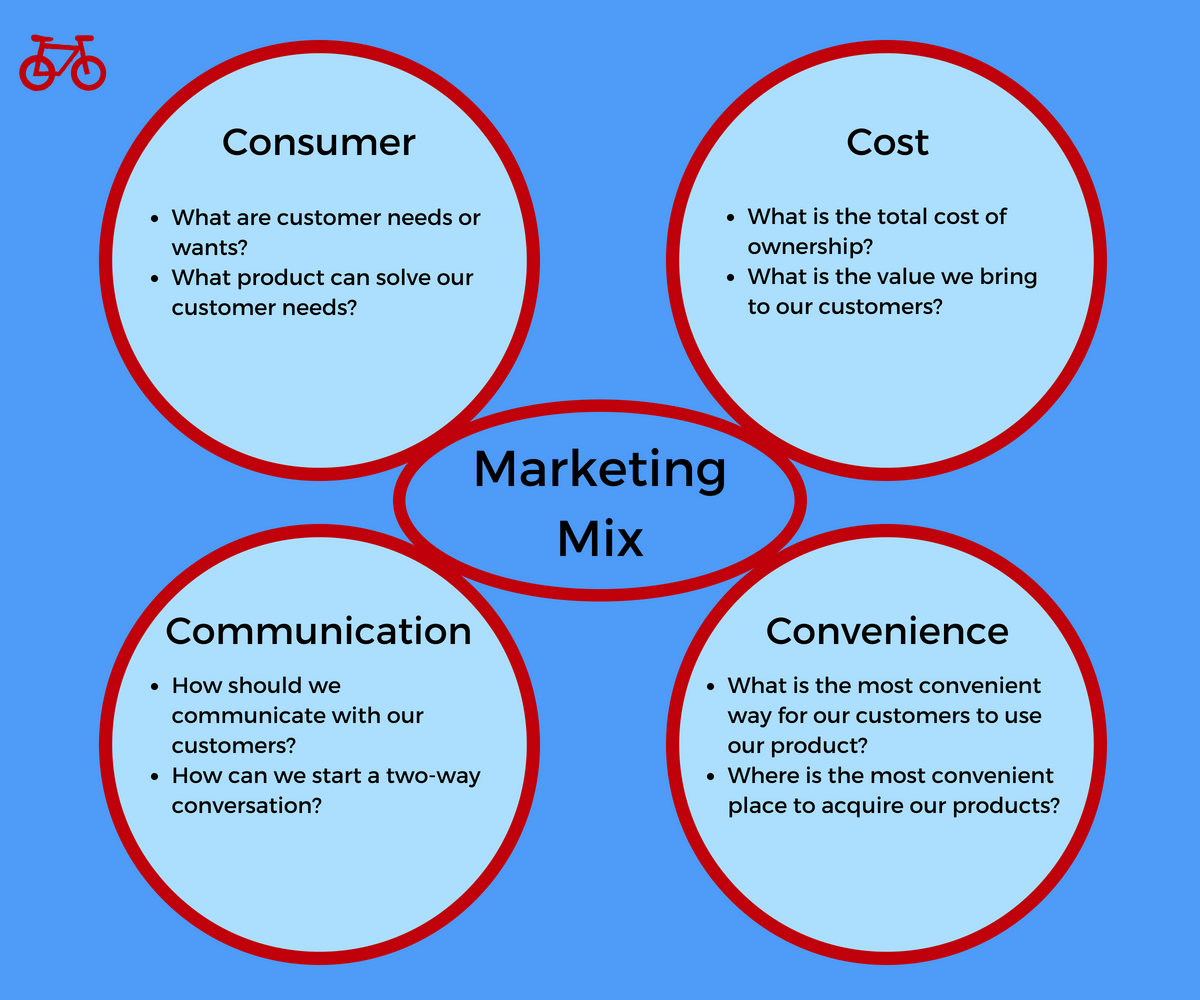The 4Cs marketing mix is a framework that puts the customer at the center of our marketing strategy. The theory was developed as a response to the growing concern that marketing was disconnected with the customer. Mass marketing had taken over, and products were being built with the company in mind.
That is how the 4Cs marketing mix entered the marketing strategy conversation. By placing the customer back at the center of our efforts.
Here, we will look at an overview of the 4Cs marketing mix.
What is the 4Cs Marketing Mix?
The 4Cs marketing mix is a modern adaptation of the 4Ps marketing mix. This version of the marketing mix takes the 4Ps model and makes the customer the center of the marketing mix strategy. The purpose of the strategy is to put the customers interests ahead of the company’s.
This is reflected in the fact that the theory uses “Cs” as its elements name structure. Also, every element we use in this model is focused on bringing value to the customer.
Customers are an essential component to our business. Thus, we need to consistently do actions that make sense to the customer. That is why the 4Cs marketing mix is a good strategy for use by marketers.
What are the Marketing Mix 4Cs?
The 4Cs marketing mix elements are consumer, cost, communication, and convenience. This is the marketing mix strategy, which is one of the more widely accepted strategies for ensuring that the customer is the focal point.
While it is built on top of the original 4Ps marketing mix, it’s goal is to ensure we keep the customer as our focus.
The elements of the 4Cs marketing mix are as follows.

Consumer
Consumer, or the customer, is the individual who uses your product. In the 4Cs marketing mix, the consumer is the first C. It establishes that all marketing should be customer focused and the first C is about providing a product strategy that is customer centric.
With consumer, marketing and product development begin their process with customer needs and wants. Then, based on the customer, a company will only build products that customers want.
This process requires a deep understanding of your customer and their journey. Then with that understanding, you can make educated product development choices. Then, create products that customers ultimately want.
The consumer is the center of the product strategy.
Cost
Cost is the concept in the marketing mix that looks at the cost of acquiring and using a product from the customers perspective. It includes every aspect of cost that a customer may face when using your product.
The cost component can include things like the price, the cost of switching, the time it takes to learn a new product, and any ongoing maintenance costs. Cost creates a holistic view of the customers perspective for acquisition and use of your product.
Ultimately, cost is a about the total cost of ownership of a product.
Communication
Communication is the process by which a company communicates with their customers.
As a component of the 4Cs marketing mix, this not only includes the traditional one-way communication flow of promotion. But, it includes the concept of two-way communication with customers.
Thus, communication is the push communication to customers regarding promotions and product information. Also, communication is the feedback communication that a company receives from their customers.
It is this complete communication loop that communication in the 4Cs marketing mix addresses.
Convenience
Convenience, as a component of the marketing mix, is how convenient it is for a customer to purchase, acquire, or use a company’s product.
Convenience addresses all aspects of the buying experience. That includes finding information about solutions to the customers need. Evaluating solutions, comparing them, and the act of purchasing. Convenience is concerned with making each step as easy as possible.
Using convenience as a marketing mix component helps address not only where a product is placed or its distribution, but allows us to address all aspects of making our products convenient for our customers to purchase.
The 4Cs and understanding what they are and how they interact with the marketing mix, allows us to have an overview of this theory of the marketing mix. It is all about keeping the customer at the center of our marketing strategy.
Who Created the 4Cs Marketing Mix?
The 4Cs marketing mix came at a period where marketers felt marketing was too company focused. Not customer focused. Thus, Bob Lauterborn in 1990 proposed the 4Cs marketing mix. This was to address the fact that the customer was not being fully serviced by the current marketing mix models.
Arguably, some companies have always put the customer first. But, there are a lot of products built where there was not a customer need or want. Thus, the Bob Lauterborn adaptation of the marketing mix is good for keeping the customer at the center of our marketing activities.
In this model, he can be credited as the sole developer of the model.
The History of the 4Cs Marketing Mix
In order to take our knowledge of the 4Cs marketing mix one step further, it is good to address its history. Understanding where the idea for the marketing mix comes from, allows us to correctly apply its model.
In 1990, as a professor at the University of North Carolina, Bob Lauterborn believed the 4Ps marketing mix was no longer applicable. To the point where he believes the model should be thrown out. And as we throw out that model, we replace it with the 4Cs. A customer focused marketing mix.
The proposal came from the shifting needs of consumers in the 1980s. MBA students were learning the 4Ps model, which was developed in the post-war mass marketing boom. Thus, the 4Cs model focused on creating more niche products to better satisfy the needs and wants of consumers.
The 4Cs came as the culmination of Lauterborn thinking the customer was not successfully being addressed. And therefore, we place the customer at the center of our marketing strategy.
How to use the 4Cs Marketing Mix
The 4Cs marketing mix provides us a fresh look at the marketing mix and ensures that we keep the customer at the center of our marketing activities.
As with all theories, we need to take the theory and then apply it to our activities. Thus, we have to look at how to use the 4Cs marketing mix.
In order to apply the 4Cs marketing mix, we need to look at a few questions within each element to point us in the right direction. Below is an overview of a few of the questions we should consider.

Consumer
Before we begin to build products, we need to ask what our customers need or want. Thus, our consideration should revolve around this concept. We should begin with the following considerations.
- What are customer needs or wants?
- What product can solve our customer needs?
Cost
When addressing cost to our customers, we have to consider everything it takes to purchase, own, and use our products. Then, we need to match that to the value our customers perceive. Thus, we should begin addressing cost with a couple considerations.
- What is the total cost of ownership?
- What is the value we bring to our customers?
Communication
Communication is all about creating a dialog with our customers. So, we should ask ourselves the following questions about our communication strategy.
- How should we communicate with our customers?
- How can we start a two-way conversation?
Convenience
Making our products as convenient for our customers as possible is how we address convenience. Thus, we should look at the following questions to begin addressing convenience for our customers.
- What is the most convenient way for our customers to use our product?
- Where is the most convenient place to acquire our products?
Using the 4Cs marketing mix is about asking questions that reflect the customer. Then using those to build a customer-centric marketing strategy. These are just a few considerations to make when using the 4Cs marketing mix as the underlying theory to your marketing strategy.
The 4Cs marketing mix puts the customer at the center of our marketing. Developed at a time where mass marketing felt disconnected from the customer, it might make more sense now than ever before. The customer trend continues to move, and possibly at a more accelerated pace, towards niche and custom products. By using the 4Cs marketing mix, we are focusing on the customer and build products that satisfy their needs and wants.